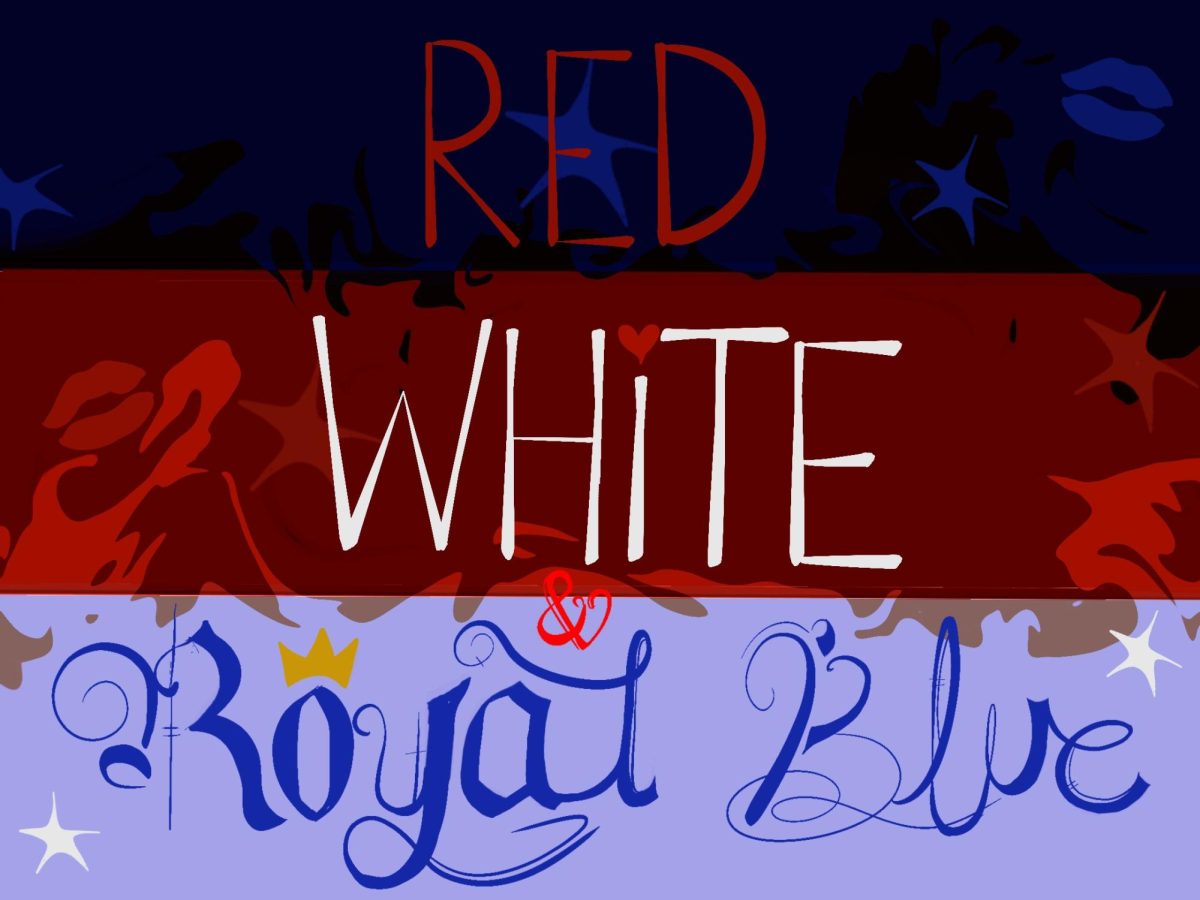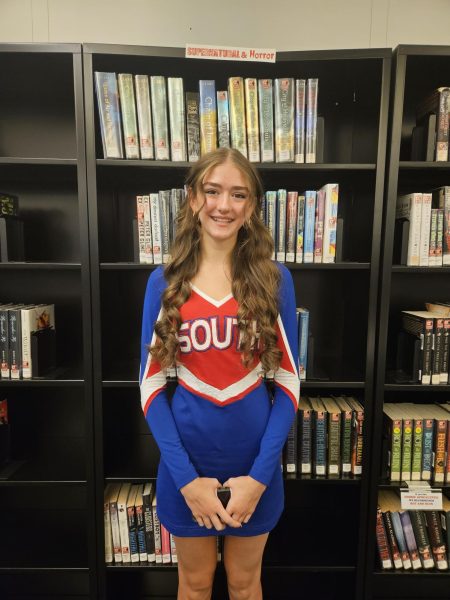The film, “Red, White, and Royal Blue” was released to Amazon Prime streaming on August 11, 2023. Based on the novel by Casey McQuiston, the film follows Alex Claremont-Diaz (Taylor Zakhar Perez) and Prince Henry (Nicholas Galitzine) as they navigate the world of royalty, politics and a budding romance. Many new rom-coms fail to articulate modern romance and can come off as “cringy,” trying too hard to “relate to the teens.” “Red, White, and Royal Blue,” however, is an amazing display of what it means to fall in love in the 21st century, especially as a queer person. The film follows characters that exist in the modern world but fall in love with the intensity of a historical drama. This classic “against all odds’” tale is woven through the complex lens of politics, the crown and queer identities. I think Casey McQuiston sums it up best on the cover of the novel: “True love isn’t always diplomatic.”
The novel, “Red, White, and Royal Blue,” spawned somewhat of a cult following after its release in 2019. With any book-to-movie adaptation, readers will always be comparing the two works. Some readers will love every minute of the movie and others will spend every minute thinking, “that’s not what happened in the book” or “they didn’t include that part I loved.” Making an adaptation is incredibly delicate: making it too accurate to the novel might not translate well into a film format, but making it stray too far from the source material frustrates fans. I would describe this adaptation as the cheesy rom-com version of the book in the best possible way. While it does cut details for the benefit of the film (adding every romantic or symbolic detail from the book really would not best serve the film), there are still many heavy parts in this movie that ooze emotion. Now that we have had time to watch and rewatch this film over and over, we can see the differences in the two adaptations. Were the changes and exclusions for the best? Let us take a closer look.
In both mediums, this is a love story between the first son of the United States Alex Claremont-Diaz and Prince Henry of Wales. Alexander Claremont-Dias is the stereotypical, picture perfect all-American boy. Raised in Texas to politician parents, politics and American pride run through his veins, as red as the stripes on his flag. His mother worked her way to the top, becoming the first female president. Being the First Son and a student at Georgetown, Alex had never stopped to consider any identity outside his American pride and political siding. He is charming and likable to everyone except Prince Henry, who has always lived his life in the spotlight and under the watchful eye of his family. Publicly, Henry is smart, polished and athletic, but privately he feels the weight of his country and lineage on his shoulders. Any misstep or wrong word could cause scandal, so he must be careful to avoid anything that could cause trouble for him and his image. One of those things being Alex, who would prove to be his greatest danger.
Getting to know the characters of a story through a journey of 300 pages always lends itself to more intimacy than doing so through a film. There is simply more physical room to add detail. For example, the book offers more insight into the inner workings of the Claremont-Diaz’s family dynamic and lifestyles.These details create a unity between the situations that both Henry and Alex live through, better developing their relationship and understanding of each other. Both sets of the leaders’ children are limited in their own ways. June, the first daughter and Alex’s sister, is a journalist for The Post. Her articles are restricted and previewed by the white house’s press team. In the book, there is more time spent looking at June and Alex as siblings, sympathizing with each other’s unique struggles. Their situation is so specific that they believe they could only ever relate to each other. This all highlights the discovery of Henry’s situation and how strongly Alex can relate to him. Similarly, the bonds between the siblings of Buckingham Palace are expressed more in the novel. While June is silenced in the media, Princess Bea is heavily publicized and criticized for her personal struggles with substance abuse. She is in her own form of confinement, with every move she makes being thoroughly examined. The novel is also able to add in miniscule details of symbolism, like Prince Henry’s favorite novel. It is only mentioned twice that the Prince reaches for “Great Expectations” as a comfort novel, but this symbolism goes much deeper. “Great Expectations” covers intertwining themes valuing love and doing what is right over power, status and wealth, things Prince Henry would deeply relate to and find solace in.
These details would feel passed over or out of context in the film and would take time away from the main plot. Although the symbolism of “Great Expectations” is beautiful and I love sibling banter, slipping that in the film would go over a non-reader’s head and ruin the flow.
The film, however, is able to display this love story in ways that a reader’s mind could never have imagined. From casting leading men with the most charming smiles available, to perfectly pacing the story, this film truly takes your hand and leads you on a guided tour through the romance. In both mediums, Alex and Prince Henry exchange emails as they fall in love, an ocean away from each other. In the book, there are chapter-long transcriptions of their email threads and phone calls.The movie represents this by projecting how it feels to fall in love over simple emails or phone calls onto the physical scope of the scene. Alex lies in bed talking to Prince Henry, an illusion sitting on the corner of his mattress. They discuss something trivial and laugh without making eye contact. As Alex turns over seemingly to look at Prince Henry, all that is on his bed is his phone, brightened by an ongoing call screen with Prince Henry’s contact info. This so perfectly describes not only how close the characters felt to each other but also how every young person feels texting with or talking to their crush through the phone.
All in all, this film is a near perfect representation of its source material. Not every beloved detail from the novel was shoved into the film, but that was for the better. This film flows from classic rom-com montages to heartbreaking monologues to complex character dynamics without missing a beat. Every exclusion from the book was made up for in amazing performance and emotion. Whether you choose to read about how Alex finds Henry “annoyingly attractive” or watch Henry find himself, you will still fall in love with these characters, this story and its very undiplomatic affairs.






























